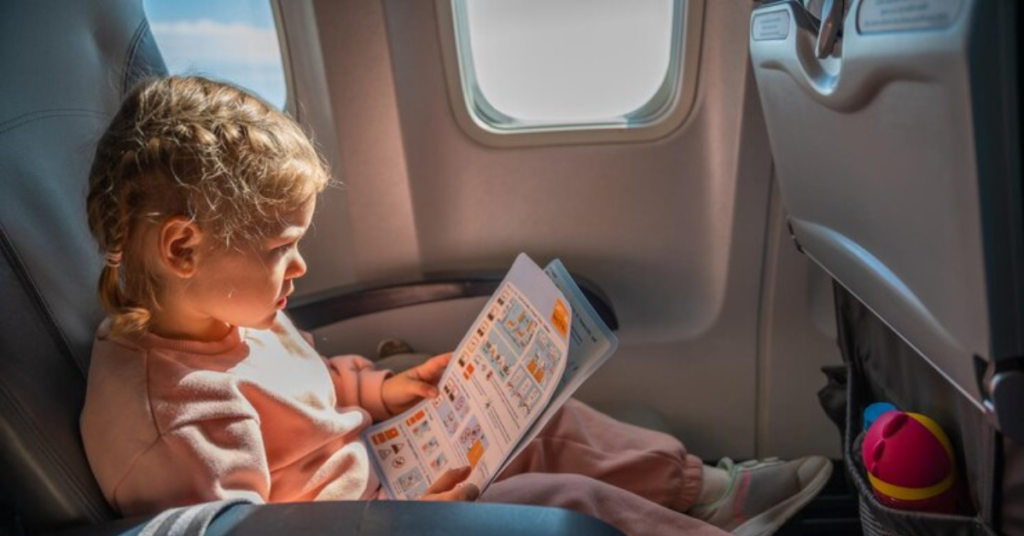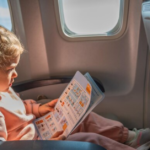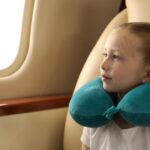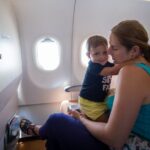Last Updated on June 17, 2025 by Muhammad Sohaib
Flying with children brings a whole new level of preparation, and if you’re a parent, you’ve probably asked: “When should I stop using a car seat on flights?” The answer isn’t as simple as an age or number. It depends on a blend of factors—weight, maturity, airline rules, and, most importantly, safety.
Whether you’re preparing for your baby’s first flight or wondering if your growing toddler can fly without a seat, this guide will help you make the best decision with confidence. We’ll break down everything you need to know—from FAA regulations to real-life travel scenarios, so you can fly smarter and safer.
Why Car Seats Are Used on Planes
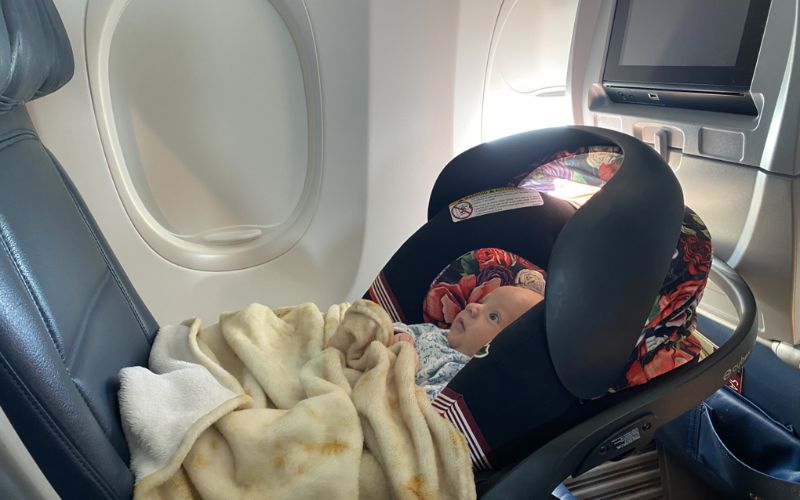
Parents often assume that if a child fits in their lap, they’re fine without a car seat during air travel. However, this is a common misconception. While airlines may allow children under two to sit on a parent’s lap, experts recommend against it for one simple reason: safety.
According to the Federal Aviation Administration (FAA), the safest way for infants and toddlers to fly is in an FAA-approved child restraint system (CRS), just like they would in a moving vehicle. During severe turbulence or emergency landings, a child on a lap can be thrown with great force.
External Resource: FAA’s Guide to Flying with Children
Key Safety Reasons for Using Car Seats in Flight:
- Protects your child during turbulence
- Provides neck and spine support for younger children
- Reduces parental stress by containing active toddlers
- Encourages restful sleep on long flights
So even though it’s legally optional for children under two, using a car seat on planes significantly reduces travel risks.
The FAA Rule: The 40-Pound Guideline
The FAA doesn’t mandate a specific age when you must stop using a car seat, but their guidance is clear: children under 40 pounds should be restrained in a car seat during flights.
This is because the lap belts on airplanes are designed for adults and older children, not toddlers. A standard plane belt doesn’t protect a 25-pound two-year-old the same way a rear- or forward-facing CRS would.
What Qualifies as FAA-Approved?
Your car seat must have a sticker that says:
“This restraint is certified for use in motor vehicles and aircraft.”
This label is usually found on the bottom or side of the car seat. Most convertible car seats and infant seats qualify. Booster seats, however, are not permitted for in-flight use, as they require shoulder belts which planes lack.
According to the American Academy of Pediatrics, all children should ride in a rear-facing seat as long as possible, then a forward-facing seat until they reach the upper weight or height limit.
To help choose the safest and most convenient travel gear, check out our list of the Best Lightweight Car Seats.
Age and Weight Breakdown: When Should You Stop?
To simplify the decision-making process, here’s a detailed table showing when to use or stop using a car seat on flights based on age, weight, and seating type:
| Child’s Age | Weight | Seat Type Recommended | Should You Use a Car Seat on Flights? |
| 0–2 Years | 0–20 lbs | Rear-Facing CRS | ✅ Yes – safest option |
| 2–4 Years | 20–40 lbs | Forward-Facing CRS | ✅ Yes – still best for safety |
| 4–7 Years | 40–65 lbs | Booster (not for flight) | ❌ Not allowed in-air; seatbelt okay |
| 8+ Years | 65+ lbs | Seatbelt only | ✅ Yes – if it fits properly |
🛑 Important: Even if your child is older than 4, if they weigh under 40 pounds, it’s still safer to use a car seat while flying.
If your toddler is approaching this stage, our review of the Best Travel Car Seats for 3-Year-Olds will help you find a perfect fit for flying.
Signs It’s Time to Stop Using a Car Seat on Flights
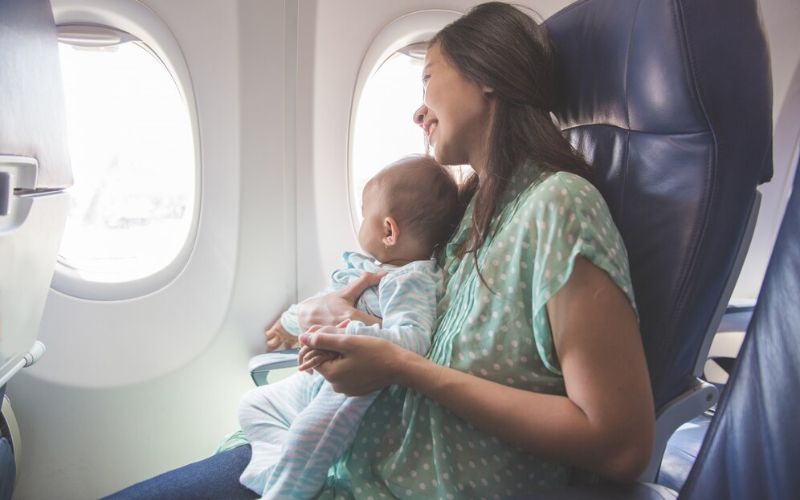
Instead of relying only on age or weight, here are some real-world readiness signs your child might be okay flying without a car seat:
Physical Readiness:
- Airplane seatbelt fits snugly over the upper thighs and lower chest (not stomach)
- Child can sit still and upright without support
- No longer fits comfortably in their CRS
Emotional and Behavioral Readiness:
- Can follow in-flight safety instructions
- Doesn’t squirm, crawl, or kick seatbacks frequently
- Will stay seated without needing to be restrained
If your child meets these criteria, you’re likely safe to stop using a car seat on flights and switch to either the CARES harness or the aircraft’s lap belt.
Pros and Cons of Using a Car Seat on a Plane
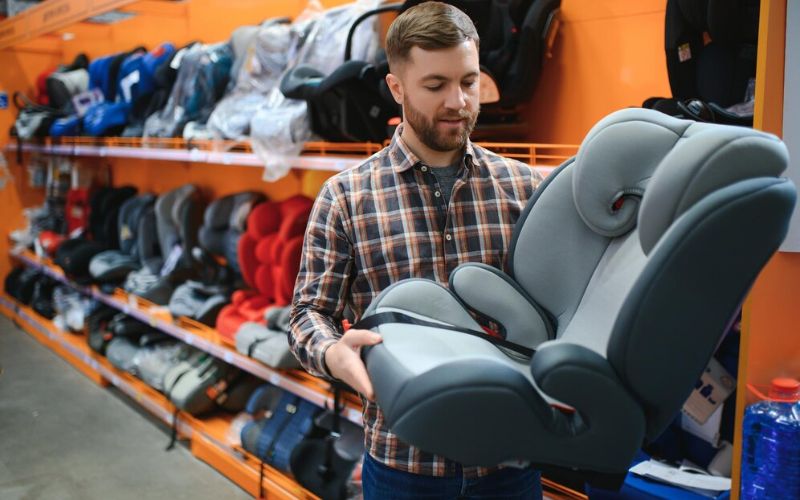
To help you decide whether to continue using one or transition away, here’s a look at the pros and cons:
✅ Pros:
- Maximum in-flight protection during turbulence
- Familiar, comfortable spot helps children sleep
- Prevents young kids from roaming or kicking seats
- Doubles as a car seat at your destination
❌ Cons:
- Heavy or awkward to carry through the airport
- Not all seats fit comfortably in airline rows
- Requires buying a separate seat if your child is under 2
- Installation can be confusing without practice
Planning to install your seat properly onboard? Don’t miss our step-by-step guide on How to Install a Car Seat on an Airplane for maximum safety and convenience.
What to Do If You’re Done With the Car Seat
If your child is ready to travel without their CRS, here are safe alternatives and preparation tips:
1. Use a CARES Harness
- FAA-approved alternative to car seats
- Designed for children 22–44 lbs
- Easy to pack and attach to plane seats
2. Practice Seatbelt Use
- Teach your child to sit still during takeoff, landing, and turbulence
- Show how the belt should fit across the lap (not stomach)
- Reward them for staying seated
3. Book the Right Seat
- Window seats are safer for small children
- Avoid exit rows (airlines won’t allow CRS or children there)
- Consider upgrading to bulkhead rows for more legroom
Still unsure which option fits your travel style? Here’s our full breakdown of the Travel Car Seat vs Convertible Car Seat comparison to help you decide.
What Airlines Say About Car Seats
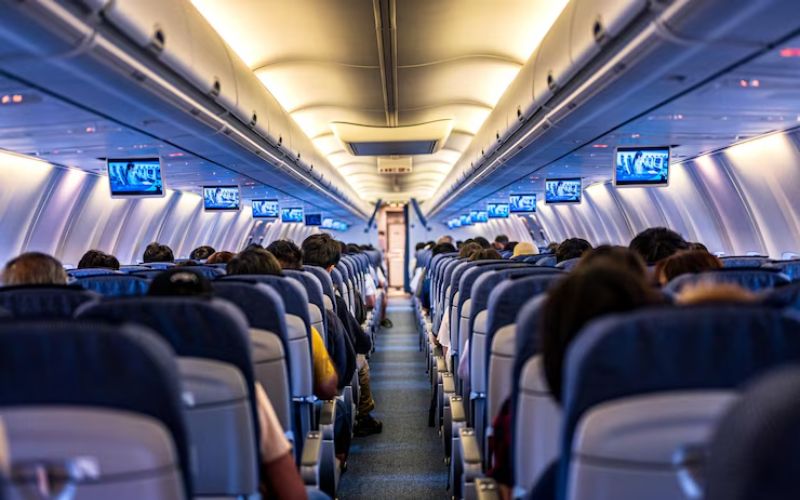
Policies vary depending on where you’re flying. Here’s a summary of major airline policies:
| Airline | Infant on Lap | Car Seat Allowed | Notes |
| Delta | Yes (under 2) | Yes (FAA-approved) | Must be in a window seat |
| Emirates | Yes | Yes | Limited to economy only |
| British Airways | Yes | Yes, in certain seats | May require advance notification |
| American Airlines | Yes | Yes | Booster seats not allowed in-flight |
🛫 Tip: Always call the airline 48–72 hours before flying to confirm their car seat rules. Bring a printed FAA approval label in case flight staff question it.
Mistakes Parents Make When Stopping Too Soon
Even well-meaning parents sometimes make these common mistakes when phasing out the car seat:
- Thinking their child is “big enough” based on age, not weight or behavior
- Letting kids sit on laps past age 2 to save money
- Gate-checking car seats instead of using them onboard
- Choosing travel comfort over long-term safety
Avoid these pitfalls by making decisions based on your child’s development and expert guidelines.
Real Advice from Experts and Parents
Dr. Lauren Crosby, pediatrician and spokesperson for the AAP, says:
“Turbulence is the leading cause of in-flight injuries to children. A properly installed car seat is the best defense.”
Real moms on Reddit’s r/Parenting and Facebook mom groups say:
“I thought my 5-year-old was fine without it until she slid under the seatbelt during landing. I now carry the CARES harness.”
“I used a lightweight Cosco Scenera Next and it was a game-changer for long flights.”
Don’t just rely on policies, lean on community wisdom and pediatric expertise.
FAQs
1. Can I use a booster seat on the plane?
No. Booster seats are not FAA-approved for flight because they require a shoulder belt.
2. Do I need to buy a separate ticket for a car seat?
Yes, if your child is under 2 and you want to use a CRS, you’ll need to purchase a seat.
3. What if my car seat doesn’t fit in the airplane seat?
Check its dimensions ahead of time. If it doesn’t fit, you may need to gate-check it and use a harness instead.
4. Is it safe to check the car seat as luggage?
It’s not recommended. Car seats can get damaged in transit, affecting their performance.
5. Do international airlines follow the same rules?
Most follow similar safety standards, but always check their individual policies beforehand.
Final Thoughts
So, when should you stop using a car seat on flights?
The safest time is when your child exceeds 40 pounds, can sit upright for the duration of the flight, and the airplane seatbelt fits correctly.
But don’t feel rushed. Many children benefit from extended use of a car seat during flights—especially on long journeys, during nap time, or in unfamiliar situations.
Want to help your child sleep better on flights without a car seat? Consider pairing your seatbelt setup with one of our Best Travel Pillows for Kids for extra support.
Remember: air travel should be safe, not just convenient. When in doubt, keep the seat.
And if you’re ready to make the switch, do it smartly—with the right gear, the right seat, and the right guidance.

Muhammad Sohaib is an experienced SEO expert with over 4 years in the digital marketing world. He is the founder of MomsChild.com, a growing parenting blog that covers topics related to kids, moms, baby products, and helpful family tips. Sohaib combines his SEO knowledge with a passion for creating content that supports parents in making informed choices. Through MomsChild, he shares practical advice, trusted product guides, and informative resources to help families navigate the joys and challenges of parenting in today’s world.
